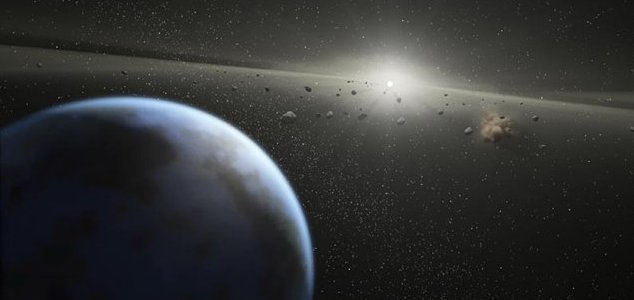Space & Astronomy
April 18, 2014 · 24 comments
24 comments

Could Kepler-186f support life ? Image Credit: NASA
Scientists this week announced that they have discovered what appears to be a planet that meets these criteria, a rocky Earth-sized world called Kepler-186f that sits right inside its star's habitable zone.
Unlike most exoplanet discoveries that tend to be worlds either too hot, too cold, too close or too distant from their parent star, this newly identified world seems to be just right. Astronomers are now hailing it as the single most promising candidate for an Earth-like planet elsewhere in the universe.
"We're always trying to look for Earth analogues, and that is an Earth-like planet in the habitable zone around a star very much the same as our Sun," said astronomer Stephen Kane.
"Some people call these habitable planets, which of course we have no idea if they are. We simply know that they are in the habitable zone, and that is the best place to start looking for habitable planets."
Source: Independent | Comments (24)
Kepler discovers most Earth-like exoplanet
By T.K. RandallApril 18, 2014 ·
 24 comments
24 comments
Could Kepler-186f support life ? Image Credit: NASA
Astronomers have located an Earth-sized world within the 'Goldilocks zone' of a distant solar system.
One of the main goals of planet hunting has been to locate an Earth 2.0 - a planet of a similar size to our own that orbits its star at a distance that enables liquid water to exist on its surface.Scientists this week announced that they have discovered what appears to be a planet that meets these criteria, a rocky Earth-sized world called Kepler-186f that sits right inside its star's habitable zone.
"We're always trying to look for Earth analogues, and that is an Earth-like planet in the habitable zone around a star very much the same as our Sun," said astronomer Stephen Kane.
"Some people call these habitable planets, which of course we have no idea if they are. We simply know that they are in the habitable zone, and that is the best place to start looking for habitable planets."
Source: Independent | Comments (24)

The Unexplained Mysteries
Book of Weird News
AVAILABLE NOW
Take a walk on the weird side with this compilation of some of the weirdest stories ever to grace the pages of a newspaper.
Click here to learn more

Support us on Patreon
BONUS CONTENTFor less than the cost of a cup of coffee, you can gain access to a wide range of exclusive perks including our popular 'Lost Ghost Stories' series.
Click here to learn more
United States and the Americas
Spirituality, Religion and Beliefs
Extraterrestrial Life and The UFO Phenomenon
UK and Europe
Total Posts: 7,607,558 Topics: 316,447 Members: 201,854
Not a member yet ? Click here to join - registration is free and only takes a moment!
Not a member yet ? Click here to join - registration is free and only takes a moment!





























Please Login or Register to post a comment.